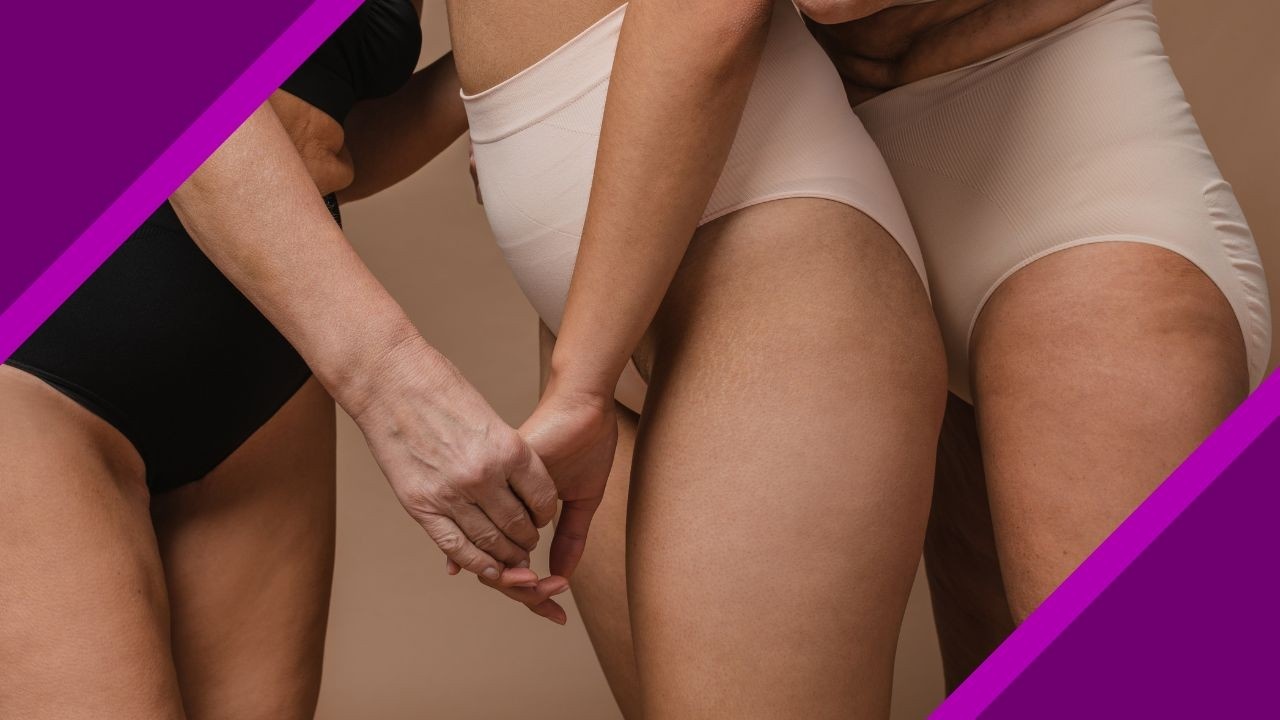
How to Build a Better Body Image in Menopause
Sep 12, 2022Many women struggle during the menopause transition. Here’s what can help.
By Selene Yeager
Body image is a lifelong battle for many women. Even when our hormones are at their most predictable and stable, many of us struggle. Those struggles often get worse when we hit perimenopause and our hormones begin fluctuating, which can sometimes cause rapid changes in body composition and mood. Even women who have never had body image issues can suddenly have challenges during this time of life.
In fact, some research shows that as few as 12 percent of women are satisfied with their bodies during midlife. That’s a problem, as poor body image is also linked to mental health issues like depression. We can’t wave a magic wand and make them go away, but we can equip ourselves with tools to make them a whole lot better, says health science professor, trainer, and creator of Fitness in Menopause, Maria Luque, PhD., who helped us build that toolbox in episode 84 of Hit Play Not Pause: Build a Better Body Image Toolbox.
How to Build Your Better Body Image Toolbox
Approach body image training the way you would any event: identify the challenges, make a plan, and then practice, practice, practice. You can’t “fix” body image issues overnight. They might always be there. But you can make them manageable, so they become less of an issue and that takes practice, Luque explained. “That's the biggest takeaway: practice it, and it becomes easier.”
Here’s what she recommends.
Identify (and minimize) your triggers. The first step is identifying your biggest body image triggers and then eliminating or minimizing them. Common triggers include:
- Mirrors. If mirrors trigger negative thoughts, get rid of some of them. Sure, you may want a mirror in your bathroom, but do you need a full-length mirror to be the first thing you see in the morning? Do you need mirrors all over when you’re working out? “I don’t work out in front of a mirror,” Luque says. “People are constantly checking themselves out in the mirror…there's no reason to do it.”
- Clothes. “If you know that when you put on this one pair of jeans or shorts that they always make you feel like complete doo doo, then just don't put them on,” Luque says. “Who hasn’t had that part of their closet that has clothes that fit at their ‘goal weight?’” she says. You think, “I want to fit back into those jeans…but you may have had three children and surgeries and a million things that have happened since you fit into those clothes, but you still have them in your closet and every time you go into your closet there is that reminder. So get rid of them.”
- Social media. Clean up your social media feed so you don’t follow people who make you feel bad, period. You have the power to go in and unfollow those accounts and then never see that stuff ever again. You will be happier for it.
- Social circles. You can’t control other people, but you can control your exposure to them. If you have a friend who is always commenting on other people’s bodies and it’s triggering for you, set boundaries for yourself. You can say, “I would really appreciate it if you would not make comments like that,” Luque says. And if they don’t, spend less time in that person’s company.

Reframe your thoughts. Replace your negative thoughts with something positive by reframing the conversation you’re having with yourself. Instead of looking at yourself and saying, “Oh my God, that cellulite on my butt looks horrible,” think about what that butt has helped you accomplish, Luque says. For instance, maybe you recently went on a hike. You could reframe the conversation as “Cellulite is natural! And this butt just got me up that mountain and it felt amazing.” Practice doing this reframing every time those negative thoughts pop up or creep in. “Do it and do it again, and then do it again and do it again,” Luque says. “And then eventually, it becomes easier.”
Start each day anew. Improving body image isn’t an easy thing to do. It’s going to always be a work in progress. Show yourself self-compassion when you struggle and start every day judgment free from whatever happened yesterday.
Set performance goals. So often the goals we set for ourselves are “body-based”: fitting into a certain pair of jeans, hitting a magic number on the scale, or looking a certain way. It’s important to remind yourself that hitting those goals doesn’t automatically equate to happiness and that setting those as your primary goals can make you miserable. “Sometimes people are on that diet and they’re working out really hard and they’re hating every minute of the journey,” Luque says. Instead, set performance goals like improving your deadlift or mastering a certain swim stroke that will let you enjoy the journey, make you feel better about your body, and improve performance.
Lift heavy sh*t. If you don’t lift weights, better body image is another (of a long, long list) of benefits you can reap from making it a regular part of your routine. Research shows that strength training is good for improving body image. That’s not surprising because when you feel strong and powerful, you feel better about yourself. Having more muscle also gives you the energy and strength to live a good, quality life, which also improves your state of mind.
Practice using judgment-free body talk. We’re always going to use descriptive words when talking about ourselves and others. Some people are tall, have red hair, or other attributes. The key is to work on not assigning value to those attributes when it comes to yourself and others. Maybe you have large thighs. That doesn’t have to be a value judgment. It just is. If you find yourself ready to talk about your legs in a negative way, ask yourself if that’s something you’d say to your children or friends. If it’s not something we would utter to someone else, we don’t need to say it to ourselves.
Finally, if you work with women, you can help break the cycle of bad body image by leading performance discussions that aren’t grounded in weight. Many of us, especially in endurance sports, have been taught that “lighter is always better” despite the fact that it’s simply not true and can pave the way for eating disorders, low energy availability, and relative energy deficiency in sport. Focusing on proper fueling; developing skill, strength, and power, and working on self-improvement without a focus on weight can go a long way in improving body image…and performance for everybody.
Get Feisty 40+ in Your Inbox
We hate SPAM. We will never sell your information, for any reason or send you emails that suck!


